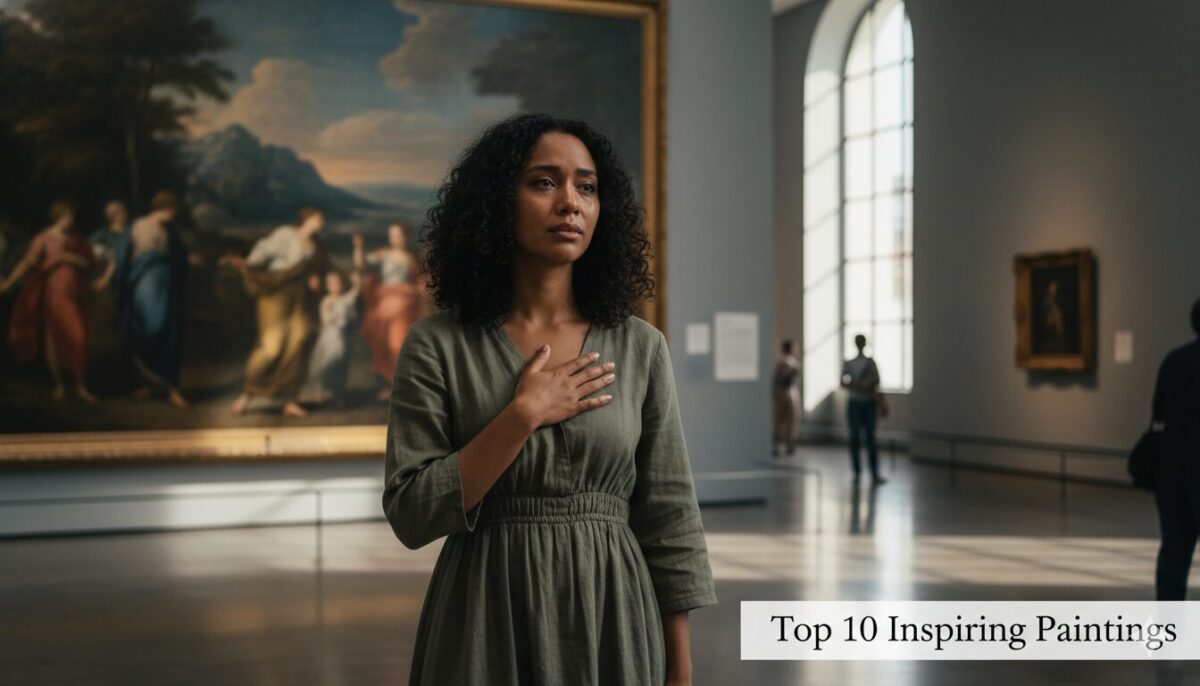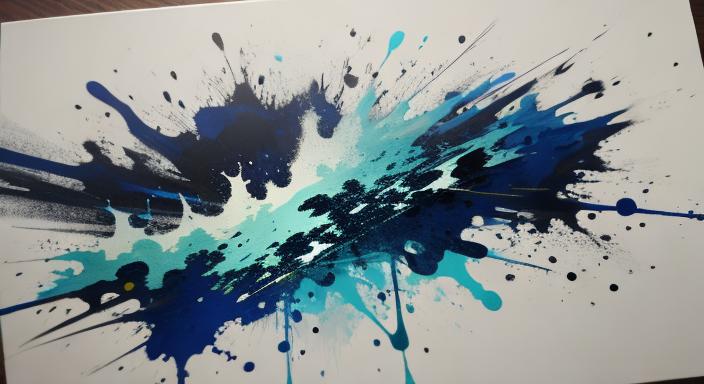Have you ever stood in front of a painting and felt like it was speaking directly to your soul? Throughout history, certain artworks have possessed this magical power—the ability to move us, challenge us, and completely change how we see the world. These aren’t just pretty pictures hanging in museums; they’re revolutionary masterpieces that transformed art forever and continue to inspire millions of people today.
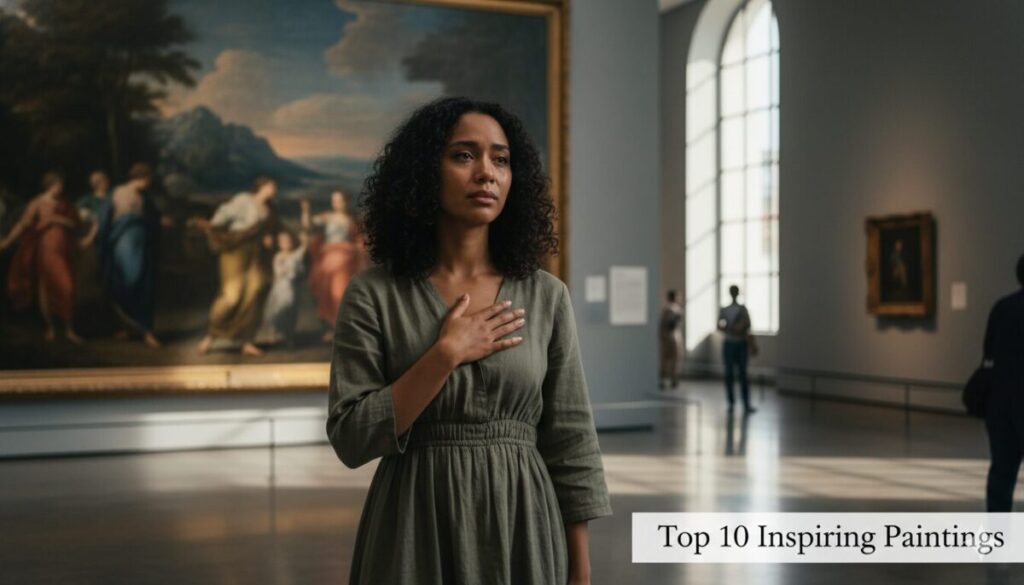
Key Takeaways
- Technical Innovation: The most inspiring paintings introduced groundbreaking techniques like sfumato, tenebrism, and impasto
- Emotional Resonance: These masterpieces capture universal human emotions from hope to anxiety
- Cultural Impact: Each work challenged societal norms and redefined what art could accomplish
- Lasting Legacy: These paintings continue to influence modern art, popular culture, and even mental health discussions
- Global Influence: The list spans five centuries and multiple cultures, proving art’s universal language
What Makes a Painting Truly Inspiring?
Before we dive into our list, let’s talk about what separates an “inspiring” painting from just a “famous” one. Sure, everyone knows the Mona Lisa, but what makes it more than just a popular image?
An inspiring painting does three incredible things: it introduces revolutionary techniques that change how artists work, it captures emotions so powerfully that viewers feel them centuries later, and it acts as a catalyst for cultural or political change. Think of these works as the superheroes of the art world—each one has a special power that transformed everything that came after it.
Scientists studying neuroaesthetics (how our brains respond to art) have discovered that we’re actually “neurobiologically wired” to connect with great art. When you stand before a masterpiece, your brain lights up in ways that contribute to your health and well-being. Pretty cool, right? Inspired? Check out our Top 100 Paintings
Renaissance Genius: The Birth of Modern Art
The Mona Lisa by Leonardo da Vinci (1503-1506)
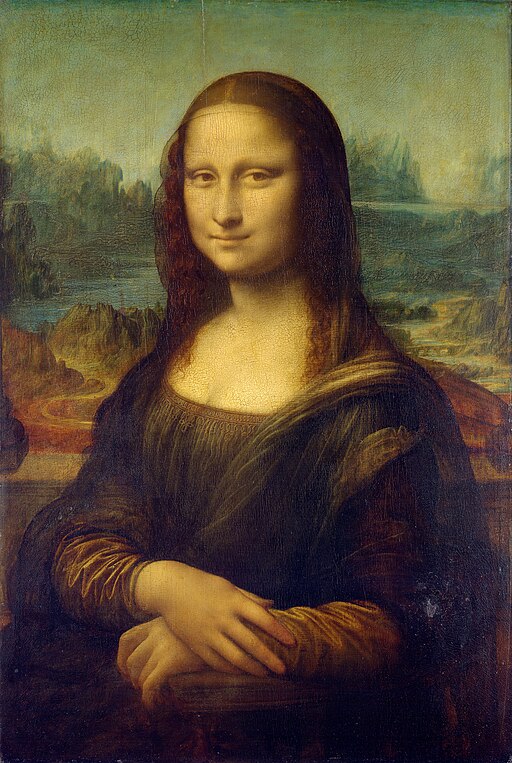
Let’s start with the queen of all paintings. The Mona Lisa isn’t just famous because it was stolen in 1911 or because everyone recognizes it—its true genius lies in Leonardo’s revolutionary use of sfumato, a technique that creates soft, smoky transitions between colors.
Leonardo spent years studying how light falls on curved surfaces, and he used this scientific knowledge to make Mona Lisa’s face appear to glow magically. By blurring the edges around her mouth and eyes, he created that mysterious smile that people still debate about today. Is she happy? Sad? Smirking at a private joke? The genius is that you’ll never know for sure.
Technical Innovation: Sfumato technique
Emotional Impact: Psychological mystery
Cultural Legacy: Most reproduced portrait in history
“Leonardo’s goal was to make the subject’s face appear to glow, giving the painting a magical quality derived from his detailed scientific inquiry.”
PBS Ken Burns Documentary
The Creation of Adam by Michelangelo (1511)
When Michelangelo painted God reaching out to touch Adam’s finger on the Sistine Chapel ceiling, he created one of the most iconic images in Western art. That tiny gap between their fingertips? It represents the moment divine spark entered humanity—literally the creation of human consciousness.
What’s mind-blowing is how Michelangelo used his deep knowledge of human anatomy to paint both figures with incredible realism. Some researchers even think the swirling cloak around God represents the human brain or uterus, adding layers of meaning about creation and knowledge.
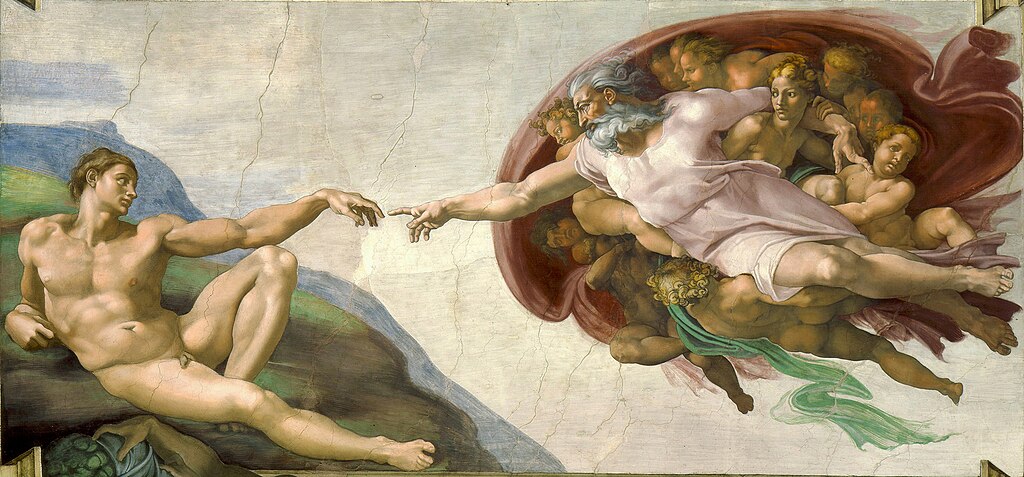
The Birth of Venus by Sandro Botticelli (1486)
Botticelli’s goddess emerging from a seashell represents more than just a beautiful woman—she symbolizes the Renaissance itself, a “rebirth of civilization, a new hope” after the Middle Ages.
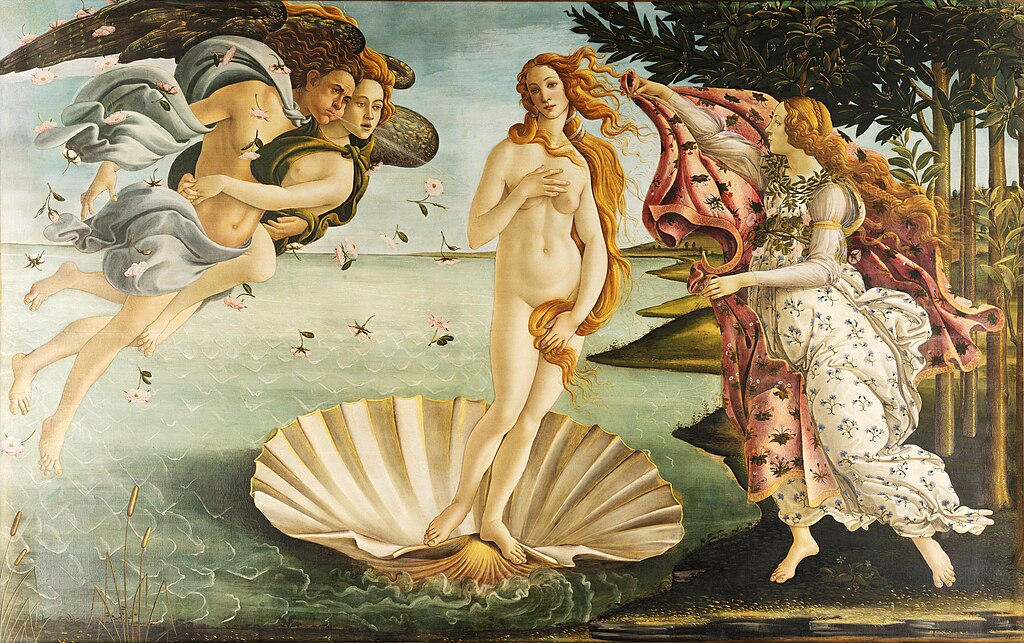
Using thin tempera paint on canvas (unusual for his time), Botticelli created an “extraordinary transparency” that makes the whole scene feel almost unreal. To Renaissance thinkers, Venus wasn’t just about physical beauty—she represented divine beauty and spiritual love that transcends our material world.
Check out this fascinating video analysis of Botticelli’s technique:
Drama and Light: The Baroque Revolution
The Night Watch by Rembrandt (1642)
Imagine you’re a Dutch militia captain who commissioned a nice portrait of your company, and Rembrandt delivers a massive 12-by-14-foot action scene instead! That’s exactly what happened with The Night Watch.
Rembrandt used tenebrism—dramatic contrasts between light and dark—to spotlight certain figures while shrouding others in shadow. It’s like he invented cinematic lighting 300 years before movies existed! The militia members appear to be marching right out of the frame, creating an almost 3D effect that was revolutionary for its time.
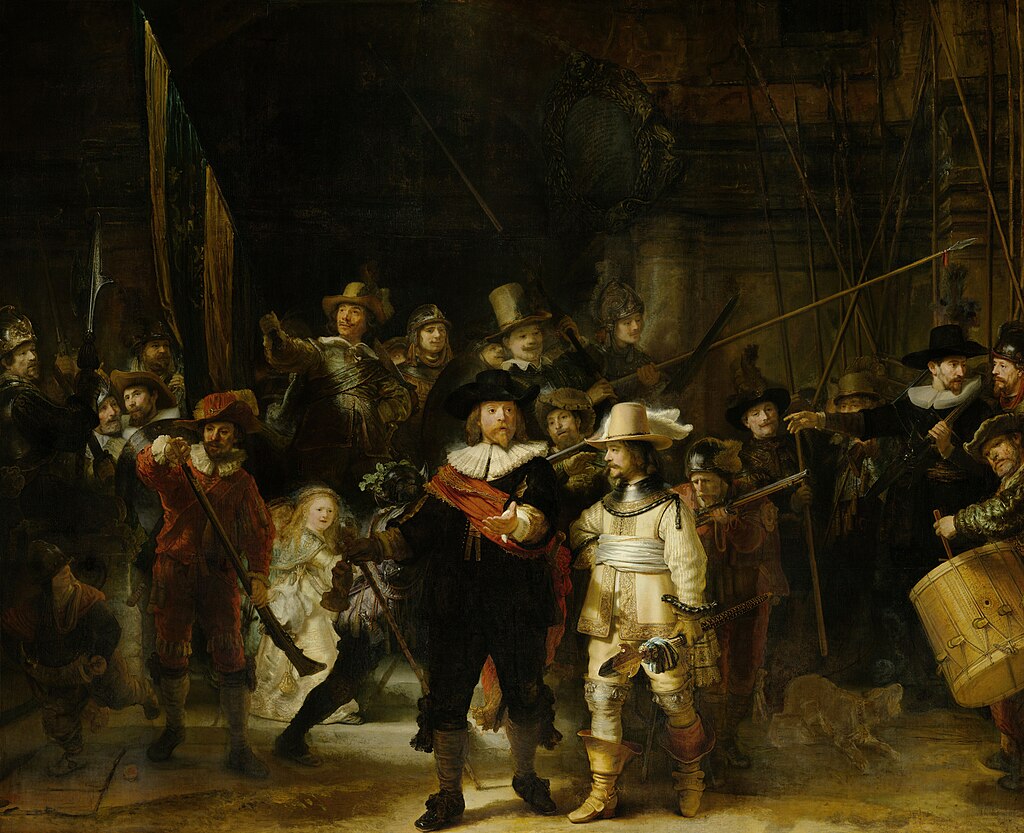
Las Meninas by Diego Velázquez (1656)
This painting is basically a 17th-century mind-bender. You’re looking at the young princess Margarita and her attendants in the royal studio, but wait—there’s a mirror on the back wall reflecting the King and Queen. Are they standing where YOU are? Is Velázquez painting them or painting the scene you’re watching?
The most inspiring part? Velázquez painted himself prominently in the scene, asserting that artists weren’t just craftsmen but intellectual equals to royalty. This was a bold statement that helped elevate the social status of artists forever.
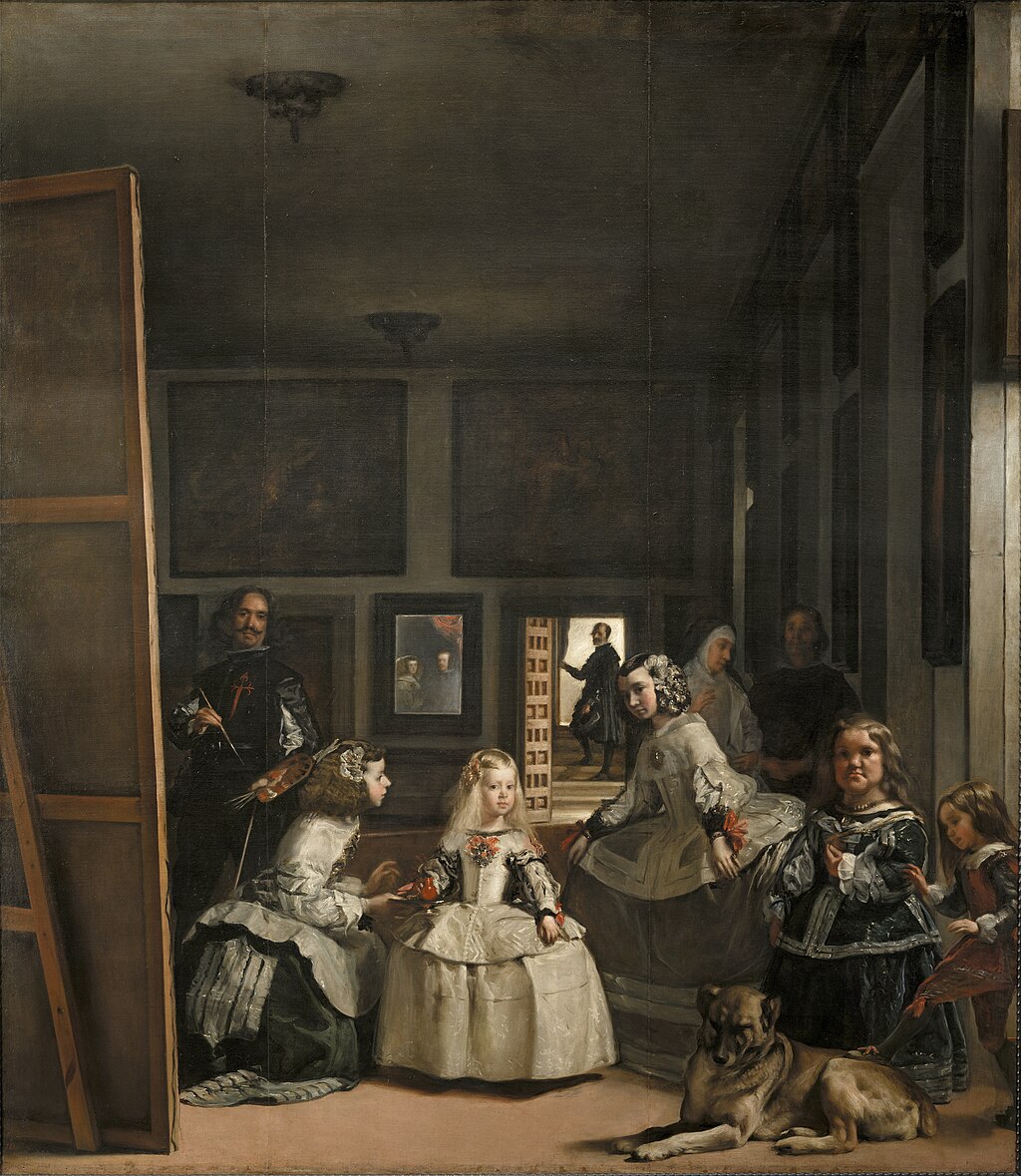
Composition Innovation Table
| Painting | Revolutionary Technique | Impact on Art History |
|---|---|---|
| The Night Watch | Tenebrism (light/dark drama) | Transformed static portraits into dynamic narratives |
| Las Meninas | Complex spatial perspective | Questioned reality vs. representation |
| Mona Lisa | Sfumato (soft transitions) | Created psychological depth in portraiture |
Global Voices: When East Meets West
The Great Wave off Kanagawa by Katsushika Hokusai (1830-1832)
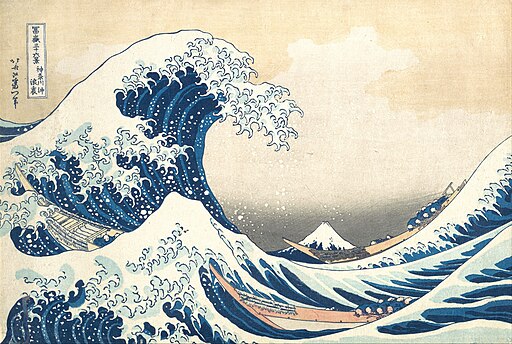
This Japanese woodblock print is arguably “the most reproduced image in the history of all art.” That massive wave towering over tiny Mount Fuji? It perfectly captures a universal truth: humanity’s fragile existence within nature’s overwhelming power.
Here’s what makes it revolutionary: Hokusai blended Japanese ukiyo-e style with Western perspective techniques (learned from Dutch traders), creating a hybrid that inspired Impressionists like Monet and Van Gogh. It proved that mixing cultural influences could create something entirely new and universally powerful.
For more Japanese art influence, check out the guide to ukiyo-e prints.
The Inner World: Expressing Emotion Through Paint
The Starry Night by Vincent van Gogh (1889)
Van Gogh painted this swirling, dreamlike sky from his asylum room in Saint-Rémy-de-Provence, shortly after a mental breakdown. The view was real, but he added an imaginary village and exaggerated the stars and moon into cosmic whirlpools.

His technique was inseparable from his emotions—using thick impasto (globs of paint) and wild, gestural brushstrokes that make the painting feel alive and moving. The work captures both anxiety and hope, reflecting Van Gogh’s internal struggle in ways that words never could.
Why It Still Matters: Van Gogh helped validate the idea that an artist’s subjective inner experience was legitimate subject matter, not just external reality. This paved the way for all modern abstract art.
Learn more about Van Gogh’s painting techniques and his innovative methods.
The Scream by Edvard Munch (1893)
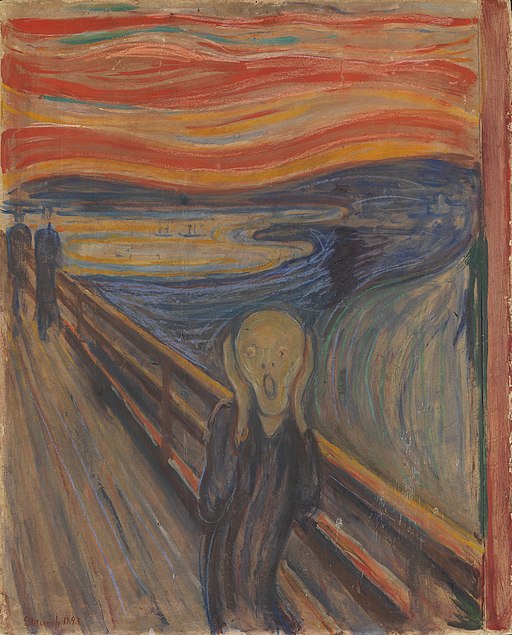
Munch described the inspiration for this painting: he was walking when he suddenly felt a wave of anxiety and sensed “the scream passing through nature.” That twisted, anguished figure against the blood-red sky? It’s become “an icon of modern art, a Mona Lisa for our time.”
The painting’s power lies not in technical complexity but in its ability to evoke a shared emotional experience—universal anxiety that everyone can relate to. Today, The Scream appears everywhere from pop culture memes to mental health awareness campaigns, proving that art can help us understand and share our deepest vulnerabilities.
Art as Weapon: When Paintings Fight Injustice
Guernica by Pablo Picasso (1937)
Picasso created this monumental mural (over 11 feet tall and 25 feet wide!) as an immediate, furious response to the Nazi bombing of the Basque town of Guernica during the Spanish Civil War.
Using Cubism’s fragmented style, Picasso rendered overlapping figures—a gored horse, screaming women, a dead baby—as discontinuous shapes that symbolize the chaos and dismemberment of war in ways traditional realism never could.
The entire massive canvas is painted only in grey, black, and white, giving it a stark “reportage quality” like a newspaper photograph. After completion, Guernica toured internationally, becoming a perpetual symbol of peace and resistance used by anti-war protestors for decades, including during the Vietnam War.
“The painting was meant to express my abhorrence of the military caste which has sunk Spain in an ocean of pain and death.”
Pablo Picasso
Guernica proved that non-aesthetic values—moral wisdom and political activism—are essential to a work’s artistic value. The paintbrush became a weapon as mighty as the pen.
Explore more about Picasso’s political art and its lasting impact.
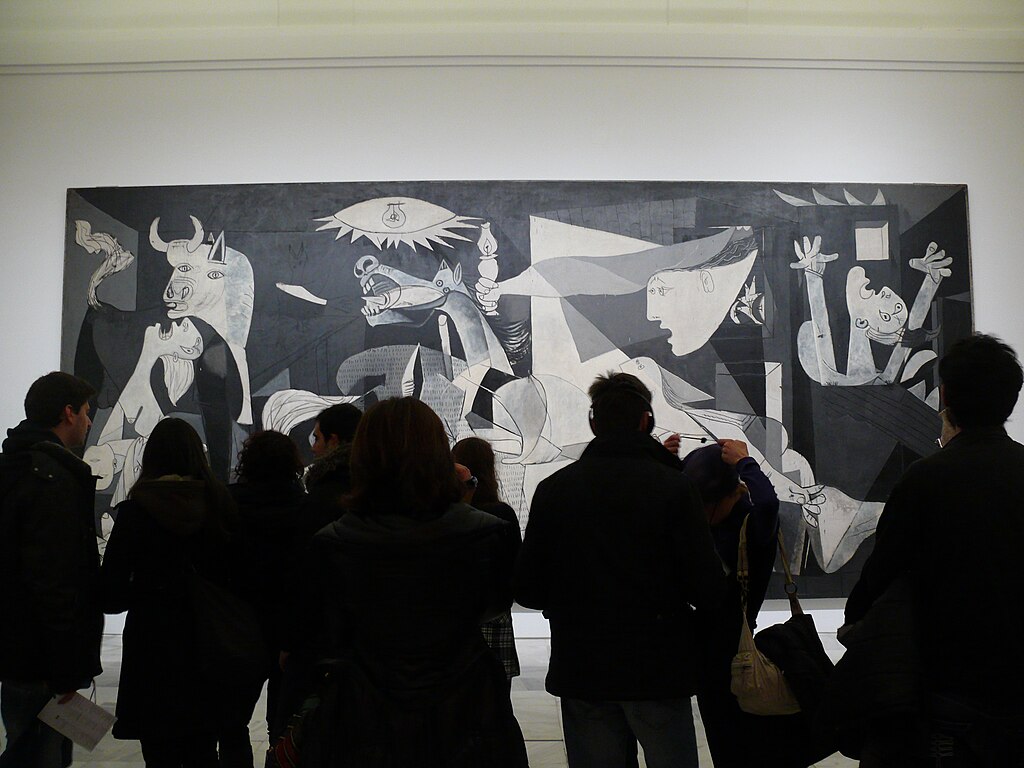
The Missing Masterpiece: The Last Supper
The Last Supper by Leonardo da Vinci (1495-1498)
Leonardo’s massive mural in Milan’s Santa Maria delle Grazie revolutionized narrative storytelling in paint. Before Leonardo, Last Supper scenes were static and boring. Leonardo chose the exact moment Christ announces, “One of you will betray me.”
Suddenly, the painting becomes “compelling drama”—apostles lean forward in confusion, gesticulate in protest, recoil in shock. Leonardo used perfect linear perspective with Christ at the vanishing point, making him both the physical and emotional center of the crisis. Every line in the architecture points directly to Christ’s solemn, isolated figure.
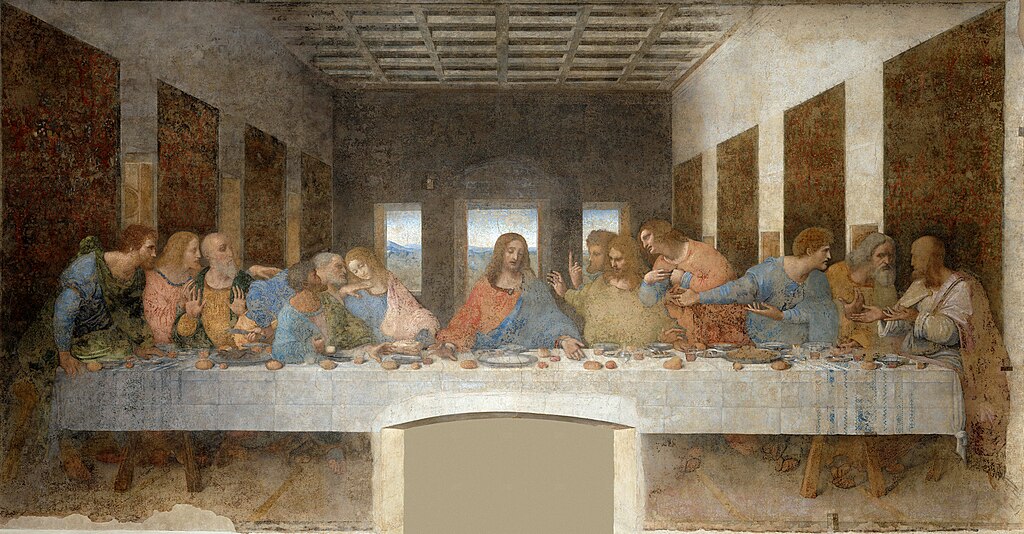
Why These 10 Paintings Changed Art Forever
Looking at these masterpieces together reveals an incredible pattern: each one fundamentally altered collective human perception of what art is and what it can accomplish.
The Common Thread: Every painting on this list did at least one of these things:
- Technical Revolution: Introduced new methods that changed how all future artists worked
- Emotional Power: Captured universal human experiences that transcend time and culture
- Cultural Impact: Challenged social norms, documented history, or sparked movements
- Lasting Dialogue: Continues to inspire reinterpretation, debate, and new artwork
The influence flows in unexpected ways: Hokusai incorporated Western perspective into Japanese prints, which then inspired Impressionists like Van Gogh and Monet back in the West. Andy Warhol transformed the Mona Lisa into Pop Art silkscreens, renewing its fame through commercial advertising techniques. Art isn’t a one-way street—it’s an ongoing global conversation.
For beginning artists, check out our guide to essential painting techniques to learn methods pioneered by these masters.
The Science Behind Why Great Art Moves Us
Modern neuroscience confirms what artists have always known: engaging with art is a “profoundly transformative force” that’s hardwired into our brains. When you experience these masterpieces, specific neural pathways activate that contribute to emotional well-being and even physical health.
Whether you’re confronting Van Gogh’s swirling anxiety in The Starry Night or Rothko’s abstract color fields, viewers often report being transformed by the experience—it’s like the artwork creates a mirror where you confront your innermost self.
This isn’t just poetic language. Art provides “connection and solace” by eliciting the full spectrum of human emotion. That’s why The Scream resonates with anyone who’s experienced anxiety, and why Guernica still moves us to tears decades after the Spanish Civil War ended.
Learn more about the psychology of art and emotion from the American Psychological Association.
Modern Legacy: From Museums to Memes
These ten inspiring paintings prove their lasting power by remaining intensely relevant in modern culture. The Scream has become a universal meme, communicating complex emotional states through a simple, recognizable form. Guernica appears on protest signs worldwide. The Great Wave decorates everything from t-shirts to tattoos.
This continuous reinterpretation ensures these masterpieces never become dusty museum relics. They’re living conversations about what it means to be human.
Timeline of Artistic Evolution
1486 - Botticelli's Birth of Venus (Renaissance idealism)
↓
1503 - Leonardo's Mona Lisa (psychological portraiture)
↓
1642 - Rembrandt's Night Watch (dramatic narrative)
↓
1832 - Hokusai's Great Wave (East-West fusion)
↓
1889 - Van Gogh's Starry Night (subjective emotion)
↓
1937 - Picasso's Guernica (art as activism)
Frequently Asked Questions
What is the most inspiring painting of all time? While subjective, many art historians consider Picasso’s Guernica the most inspiring due to its profound anti-war message and technical innovation that continues influencing political art today.
Why is the Mona Lisa so famous? The Mona Lisa’s fame stems from Leonardo’s revolutionary sfumato technique, which creates mysterious psychological depth, combined with its dramatic 1911 theft that generated worldwide publicity.
What painting technique did Van Gogh use? Van Gogh employed impasto (thick paint application) and highly gestural brushwork that created visible texture and movement on the canvas.
How did Japanese art influence Western painters? Hokusai’s woodblock prints sparked the Japonisme movement, influencing Impressionists and Post-Impressionists like Monet and Van Gogh with bold colors, flattened perspectives, and innovative cropping.
What makes a painting a masterpiece? A true masterpiece establishes new paradigms for visual language, narrative structure, or psychological exploration that fundamentally shift artistic understanding.
Where can I see these famous paintings? The Mona Lisa is at the Louvre (Paris), The Starry Night at MoMA (New York), Guernica at Reina Sofía (Madrid), The Night Watch at Rijksmuseum (Amsterdam), and The Birth of Venus at Uffizi Gallery (Florence).
Your Journey With Art Starts Here
These ten inspiring paintings represent more than beautiful images—they’re milestones in human creativity that demonstrate art’s power to change how we see ourselves and our world. From Leonardo’s scientific precision to Picasso’s moral outrage, each masterpiece functions as an engine of human advancement, pushing the boundaries of expression.
Whether you’re an aspiring artist, a museum enthusiast, or someone who just appreciates beauty, understanding these works enriches your visual literacy and connects you to centuries of human creativity. The next time you stand before one of these masterpieces—or even a poster reproduction—remember: you’re experiencing something that has the power to “challenge, comfort, provoke, and inspire, often simultaneously.”
Start exploring painting styles and movements to deepen your appreciation, or learn about famous artists throughout history who created these world-changing works.
Additional Resources
- PBS Leonardo da Vinci Documentary – Mona Lisa Analysis
- Khan Academy – Guernica by Picasso
- MoMA – The Starry Night Collection
- American Psychological Association – What Happens in the Brain When We Experience Art
- Draw Paint Academy – Vincent van Gogh Techniques
- National Gallery of Victoria – Hokusai and The Great Wave
- Internet Encyclopedia of Philosophy – Value of Art

